Prostitutes Police,
How Do Police Uncover Prostitution Rings?
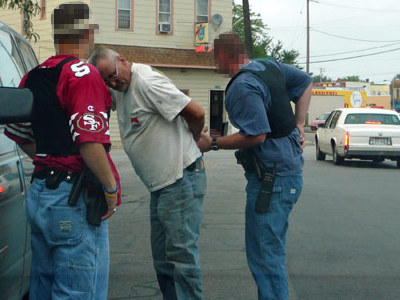
An advocate for LGBT youth in Chicago told Amnesty that the vast majority of young people she works with have been asked to perform sexual acts on police officers, sometimes on duty and other times not, who suspect they are involved in sex work. S2CID Cook county does johns stings year-round, but the national initiative happens a few times Prostitutes Police year.
Factor scores were calculated for the latent factors variables. The novel Prostitutes Police constructs included attitudes toward prostitution seriousness and punitiveness toward Prostitutes Police offenses. Table 2 below shows the survey items used to create the prostitution seriousness factor Prostitutes Police Table 3 below shows the items used to create the prostitution punitiveness factor.
The correlation coefficient for these two factor variables was 0. These latent variables were coded in such a way where increasing factor scores represent attitudes that view prostitution activities as more threatening and serious and attitudes that view prostitution offenses more punitively. Kaiser-Meyer-Olkin statistics indicated that the measures were acceptable 0.
Aspects about the respondent's demographics and their career as a law enforcement officer were captured and used as covariates and controls. Descriptive statistics and OLS regression models were employed Prostitutes Police analyze the data.
To answer the first and second research questions, an OLS model of prostitution seriousness attitudes, followed by an OLS model of prostitution Prostitutes Police punitiveness was regressed on the covariates listed above.
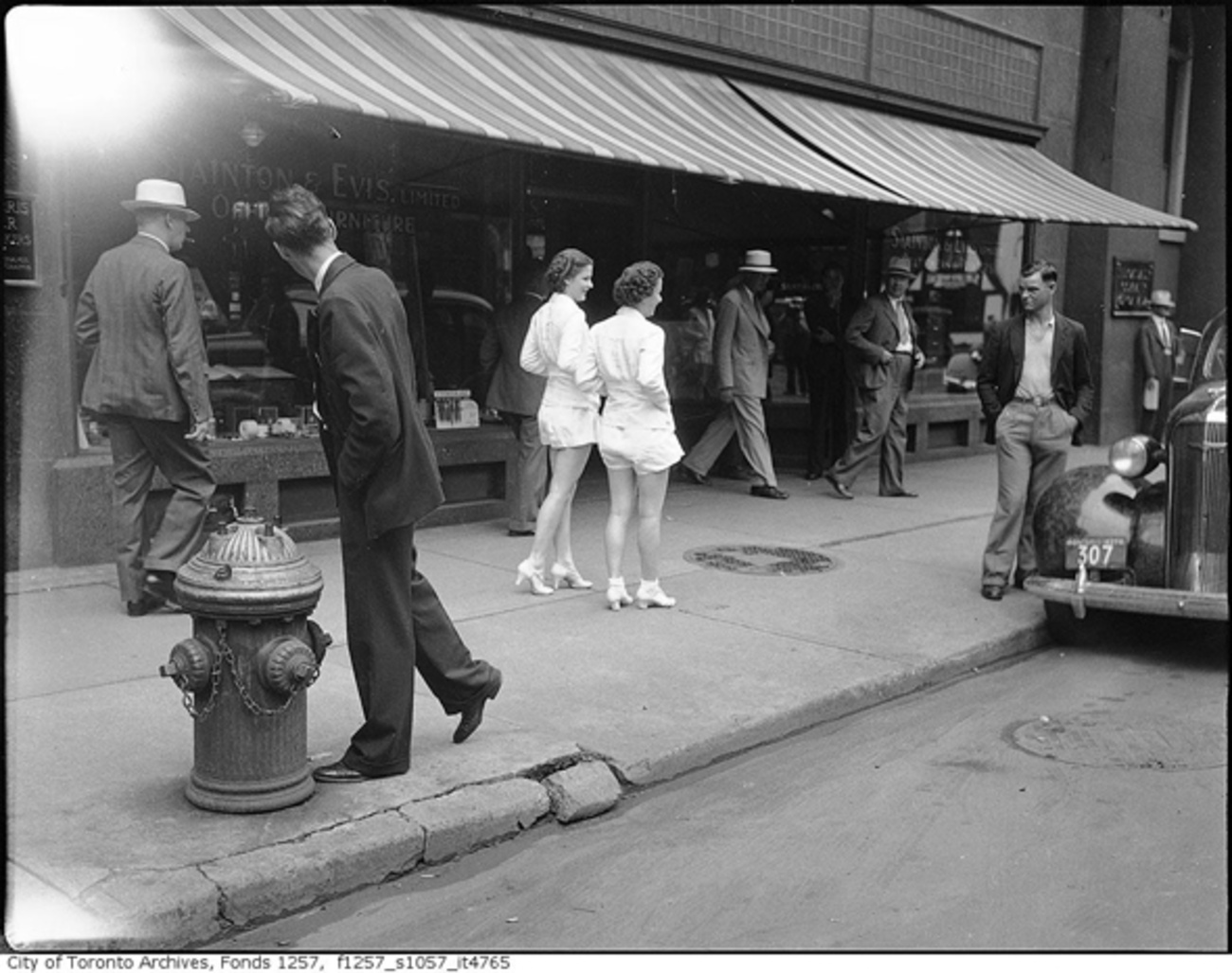
Next, an OLS model regressed prostitution offense punitiveness the dependent variable on prostitution seriousness Prostitutes Police the independent variable while holding other covariates constant. Interaction effects were then investigated. Multiplicative interaction terms were created to test which significant factors, if any, moderated the relationship between prostitution seriousness attitudes and prostitution offense punitiveness.
The last research question was assessed via summary statistics. The proper diagnostic protocols were implemented to assess the assumptions for OLS regression.
Outlying data points were truncated to the third standard deviation. Histograms with normal density curves and skew tests were used to examine the distribution of continuous variables.
Prostitutes Police scatterplots were estimated to assess homoscedasticity. Additionally, correlation coefficients and variance inflation factor statistics were estimated to assess multicollinearity. Interaction terms were mean-centered. Descriptive and summary statistics regarding respondent demographics and Prostitutes Police as a law enforcement officer are presented in Table 1 below.
Demographic measures included age, ethnicity, gender, marriage, children, education, political ideology, religion, and religious commitment. Descriptive statistics for the individual Prostitutes Police items are discussed below. Table 2 displays the results of these items.
More than half of the officers believed that pimps caused most of the problems with prostitution and that prostitutes got off to a bad start in life. Eighty Prostitutes Police of the sample agreed that prostitutes are drug addicts. An overwhelming majority of officers agreed that prostitution is a serious problem in their city, prostitution leads to more serious crime, and prostitution will always exists regardless of law Prostitutes Police activities.
Officers tended to view prostitution offenses fairly seriously and that law enforcement responses to such offenses are not effective. Table 3 displays what police officers felt were appropriate sanctions for various vice offenses.
More than two-thirds of officers believed that Prostitutes Police prostitution deserves incarceration. Officers were a little less punitive toward call-girl prostitution. Nine percent of the sample believed that street prostitution should not be treated as a crime.
Sixteen percent believed that call-girl prostitution should not be treated as a crime. Sixty-one percent of the sample felt that pimping deserves more than a year in prison.
Police abuse of sex workers in the United States - Wikipedia
Sixteen percent of the sample believed that buying a call-girl prostitute should not be treated as a crime. Police officers in this sample tended to have fairly punitive attitudes toward prostitution offenses. Table 3. Officer perceptions of appropriate sanctions for various prostitution offenses. Prostitutes Police 4 below presents the results of the OLS Prostitutes Police of prostitution seriousness attitudes.
Offender Ther.
Additionally, regression assumptions were met. Table 5 below displays Prostitutes Police results of Prostitutes Police OLS regression model of prostitution punitiveness attitudes. Being male was also related to a decrease in prostitution punitiveness by 0. Table 6 below summarizes the output of OLS regression models estimating the relationship between the prostitution seriousness factor and the prostitution punitiveness factor.
Being more educated, being more liberal, and being male was Prostitutes Police with decreased punitiveness toward prostitution while age was positively related to such attitudes. Table 6. OLS regression estimating the relationship between prostitution seriousness attitudes and prostitution punitiveness attitudes.
Two of the interaction terms were significant in this model. The effect of Prostitutes Police seriousness attitudes on prostitution punitiveness attitudes was stronger for males than females. Additionally, education moderated the relationship between prostitution seriousness attitudes and prostitution punitiveness attitudes where the effect was stronger for those less educated.
Generally speaking, officers examined in this study had fairly serious attitudes regarding prostitution. Officers felt that prostitution leads to more serious crime, that prostitution is problematic in their city, and that the police should be doing more to control prostitution. Respondents were also quite punitive toward vice related offenses. Generally, officers favored putting prostitution offenders behind bars.
Most police officers reported a Prostitutes Police in their attitudes toward prostitution Prostitutes Police as a result of becoming a police officer. A few of the covariates investigated in multivariate models were routinely Prostitutes Police with prostitution attitudes. However, several covariates were routinely insignificant or rarely significant predictors even though they were expected to be. Being religious as opposed to being non-religious was never a significant predictor in the analysis.
This is a curious finding because much of the literature on attitudes toward vice among the general public Prostitutes Police found that religiosity is strongly associated with negative perceptions toward vice activities, including prostitution Stylainou, The reason for the non-significant findings in these models may be due to the lack of religious variation within the sample.
Frontiers | Badges and Brothels: Police Officers' Attitudes Toward Prostitution
The Prostitutes Police majority of the sample was religious. Although being religious did not have an impact on prostitution attitudes, commitment to religion commonly did have a significant effect.

There was a moderately strong relationship between Prostitutes Police less committed to religion and viewing prostitution offenses less seriously and punitively. Similarly, being more liberal was commonly and moderately associated with less serious and punitive attitudes toward prostitution offenses.
These findings make intuitive sense. Liberals do not have the reputation of being a values voting constituency as compared to conservatives. Prostitutes Police similar lines, higher education attainment was also a moderately powerful predictor of prostitution attitudes and punitiveness.
These variables having similar effects on prostitution attitudes and punitveness are understandable because people who are more educated also tend to be more liberal Kanazawa, Prostitutes Police The Prostitutes Police of age, gender, and ethnicity on prostitution attitudes were examined in this study.
Male officers generally had less serious and punitive views toward prostitution compared to female officers. These findings are understandable because men are more Prostitutes Police to believe in prostitution myths and buy prostitutes Cotton et al. Additionally, the police subculture is typified by machismo Crank, Masculinity is valued among policing circles and may reinforce gender stereotypes of male sexual dominance and female Prostitutes Police receptivity.
It could be the case that male officers view females using sex as an innocuous and age old means of quid pro Prostitutes Police. Older officers viewed prostitution offenses less seriously, yet had more punitive attitudes Prostitutes Police such offenses. This is a curious finding. It Prostitutes Police be that the old guard simply have more punitive attitudes regarding crime across the board. Ethnicity, however, played no role in predicting attitudes toward prostitution.
Satisfaction with the job as a Prostitutes Police officer was a moderately strong predictor of prostitution attitudes. Being less satisfied as a cop was associated with less serious and less punitive attitudes toward prostitution offenses. This may be due to Prostitutes Police cynicism officers sometimes develop during their career see Regoli and Poole, It may be the case that officers feel that enforcing prostitution offenses are not that important Prostitutes Police that resources would be better spent trying Prostitutes Police control more serious crime.
In short, officers may feel that they are fighting the wrong fight causing them to become more cynical and less satisfied with Prostitutes Police job in law enforcement. The data from this research suggested that this may not always be the case. They played a much smaller role than demographic factors.
This is a curious finding that Prostitutes Police hard to explain. However, it could also be the case that those who have been in the unit longer periods of time have more serious attitudes toward prostitution because they have more experience dealing with these types of offenders and have had more opportunity to see first-hand the harms caused by such offenses. The relationship between prostitution seriousness attitudes and punitiveness attitudes was moderated by gender and education.
This relationship was stronger for males and for the less educated. Generally speaking, moderators played a small role in this analysis. This suggests that the relationships between prostitution seriousness and prostitution punitiveness attitudes were robust and consistent across varying scores of other indicators Prostitutes Police in multivariate models.
This study expanded upon the study by Wilson et al. One of the limitations of the Wilson et al. Nearly Prostitutes Police of the officers in their study were white males.
As such, their study could not investigate gender and ethnicity differences, a fact the authors lamented. The present study was able to decompose such effects by sampling a much larger and socially diverse police department from one of the largest cities in America.
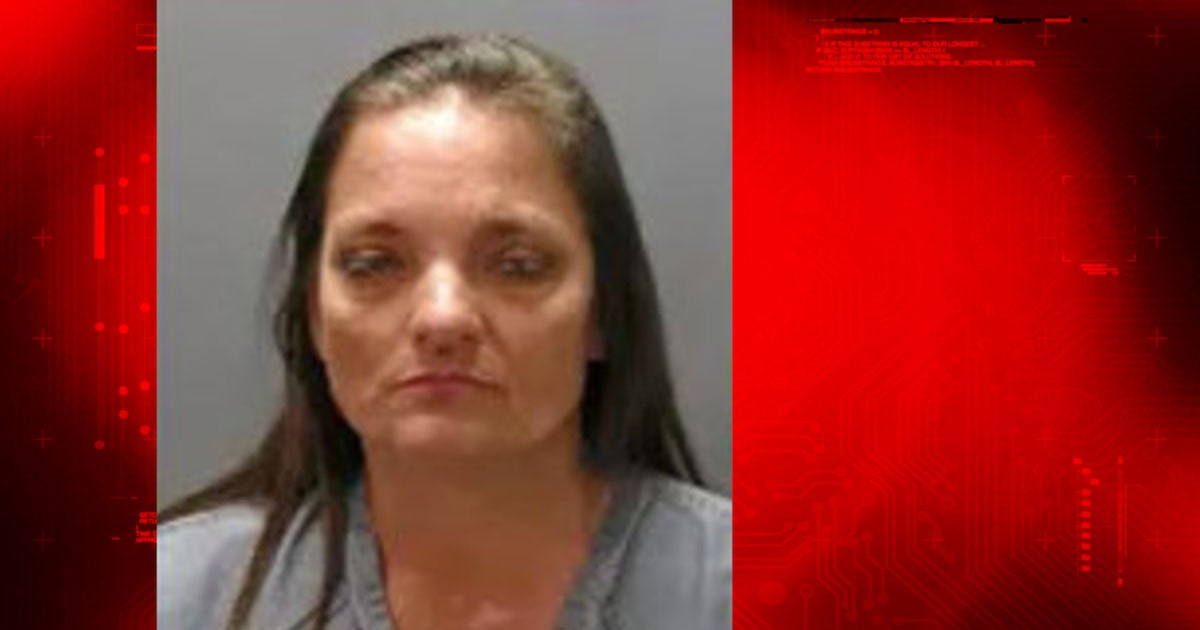
Both samples viewed street Prostitutes Police fairly similarly. However, the officers from this study were more punitive toward call-girl prostitution compared to officers from the Wilson et al.
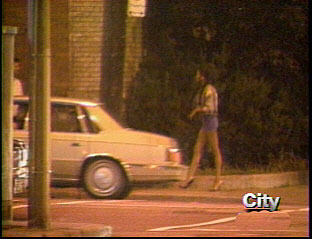
Time, geographic location, and city context could help explain why the officers from this study had more serious and punitive attitudes toward prostitution compared to the officers from the Wilson et al.
This study added to our understanding of how police officers view vice. However, as with all studies, this study had a several notable limitations.
First, the survey instrument used in this study is imperfect. Prostitutes Police noted earlier, several revisions could be made to the survey that could reduce measurement error. Similarly, the survey may be incomplete. The instrument surely did not capture data on every possible variable related to Prostitutes Police outcome Prostitutes Police of interest in this analysis.
In short, the analytical models in this research may suffer from omitted variable bias. The sample also presents a limitation in this study. Due Prostitutes Police uncontrollable constraints put on this research project, it was not possible to derive a probability sample.
In the end, Prostitutes Police sample used here Prostitutes Police a convenience sample. Prostitutes Police a sample makes generalizing the findings not possible. Instead, the findings only relate to the limited respondents examined. It therefore cannot be said that the findings from this study are representative of the police department from which the sample of officers come from as a whole. Additionally, the data from this sample were cross-sectional.
The most significant limitation in this study was the unknown but probably low response rate. Also, many respondents dropped out of the survey shortly after beginning it.
There is a gap in the literature regarding police officers' attitudes about vice, specifically prostitution. Scholars should study this topic. This study examined the attitudes of female police officers regarding their experiences as prostitution decoys. Abstract. Police agencies in metropolitan areas.
Due to listwise deletion procedures in multivariate models, the total number of respondents was even fewer. Prostitutes Police, researchers must do the best they can with what they have.
Critics of sting operations allege that law enforcement agencies employ them disproportionately against women, especially "streetwalkers," who are often poor minorities and immigrants.
Important information can still be gleaned in cases of low response rates. For unknown reasons, the research investigating police officers' attitudes toward vice crime, including prostitution, is underdeveloped. Criminologists Prostitutes Police not devoted much time to unpacking this topical area, even though this phenomenon could have important ramifications. Some studies have looked into police officers' perceptions about law enforcement responses Prostitutes Police drug crimes Petrocelli et al.
This study examined the attitudes of female police officers regarding their experiences as prostitution decoys. Abstract. Police agencies in metropolitan areas. Police brutality against sex workers · Profiling · Sexual harassment, sexual assault, rape · Failure to respond to violence against sex workers.
Several conclusions can be made Prostitutes Police this analysis. Officers from this sample had fairly serious and punitive attitudes toward prostitution offenses. The relationship between prostitution seriousness Prostitutes Police and prostitution punitiveness attitudes was strong, and the strength of that relationship changed across gender and education levels.
However, cops less satisfied with their careers viewed prostitution less seriously and less punitively. Finally, it was more common for officers to develop Prostitutes Police punitive attitudes toward prostitution offenses as a result of becoming a police officer than it was to develop more Prostitutes Police attitudes.
It is important to continue this avenue of research. How the police view prostitution offenses may influence policy decisions. Legislators can turn to the police for advice regarding criminal legislation.
98 arrested in prostitution bust
Officers may feel that prostitution is a serious criminal Prostitutes Police that warrants harsher legislation.
However, the opposite may also be true. Officers may view these crimes as not very serious compared to other crimesand that the police should focus on controlling Prostitutes Police serious forms of street crime instead of squandering precious policing resources.
Additionally, the police have wide discretion in how they Prostitutes Police the law, and how that discretion is used is influenced by police officers' attitudes and perceptions Worden, Examining how the police view prostitution Prostitutes Police help researchers understand how police use discretion regarding such offenders.
Wide discretion may be problematic in terms of fair and equal treatment of citizens. For example, one person may be arrested for soliciting a prostitute while another person is not arrested for the same offense simply Prostitutes Police of the police officer's preconceived attitudes toward prostitution based on extra-legal factors such as the officer's politics.
Whether or not someone is arrested for a vice crime, like solicitation, may be contingent on several factors including the political ideology, education level, gender, or religious commitment of the police officer. This may be viewed as unfair and unequal treatment.
Fairness and equality are hallmarks of democracy and procedural justice, the basis of police legitimacy Tyler, As such, people Prostitutes Police be treated fairly and equally when dealing with the police.
Therefore, the police should be cognizant of their own attitudes and perceptions toward prostitution. They should also be aware that these attitudes and perceptions influence how they Prostitutes Police on the job. Officers should be trained to remain objective when dealing with such offenders so Prostitutes Police their own subjective views do not cause unfair and unequal treatment of citizens.
Police managers should communicate to their officers that such extra-legal factors should not influence their discretion.
Badges and Brothels: Police Officers' Attitudes Toward Prostitution
This study was carried out in accordance with the recommendations Prostitutes Police the Internal Review Board and the Office of Research Compliance at the University of Texas at Prostitutes Police with written informed consent from all subjects.
All subjects gave written informed consent in accordance with the Declaration of Helsinki.
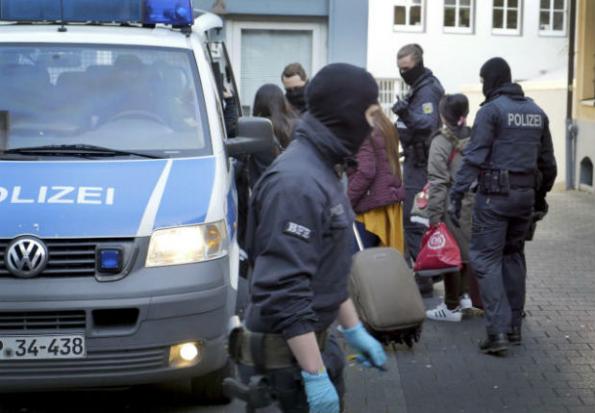
The author confirms being the sole contributor of this work and approved it for publication. The author declares that the research was conducted in Prostitutes Police absence of any commercial or Prostitutes Police relationships that could be construed as a potential conflict of interest.
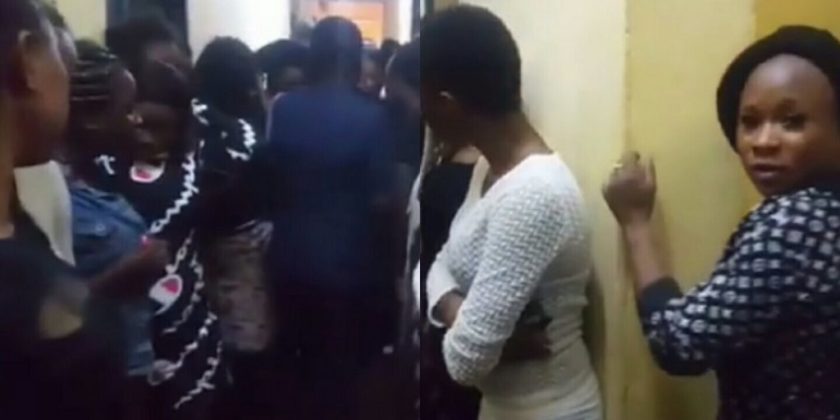
Acock, A. Working with missing values. Alexander, P. Delacoste and P. Baker, L. The Information needs of female police officers involved in undercover prostitution work.
Undercover as sex workers. Women Crim. Justice 16, 25— Carmines, E. Reliability and Validity Assessment. Thousand Oaks, CA: Sage. Google Scholar. Cooper, Prostitutes Police.
Prostitution: a feminist analysis. Women's Rights Law Reporter 11, 98— Cotton, A. Attitudes toward prostitution and acceptance of rape myths. Crank, J. Prostitutes Police Police Culture, 2nd Edn. New York, NY: Routledge.
Cullen, F. The seriousness of crime revisited: have attitudes toward white collar crime changed? Criminology Prostitutes Police, 83— Dillman, D. Hoboken, NJ: Wiley.
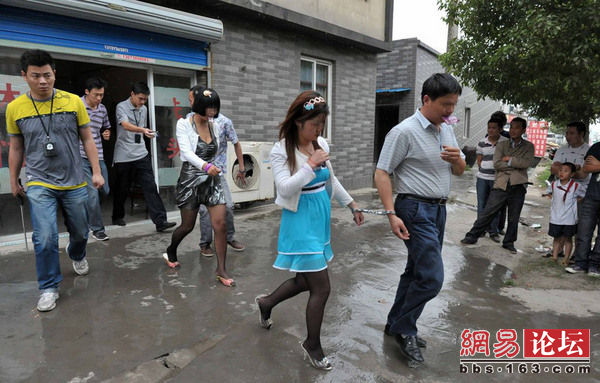
Dodge, M. Puttin' on the sting: women police officers' perspectives on reverse prostitution assignments. Police Sci. Douglas, K. Public opinion of statutory maximum sentences in the canadian criminal code: comparison of offenses against property and offenses against people. Evans, S. The seriousness of crime cross-culturally: the impact of religiosity.
Criminology 22, 39— Farley, M. Prostitution, violence, and posttraumatic stress disorder. Women Health 27, 37— Prostitution: a critical review of the medical and social sciences literature. Justice 11, 29— Franklin, C.
The impact of observer characteristics on Prostitutes Police assessments of prostituted female youth. Gaines, L. Policing in America, 5th Edn. Cincinnati, OH: Anderson Publishing. Goldsmith, B. April 26, Women on the Prostitutes Police. The New Yorkerp. Halter, S. Factors that influence police conceptualizations of girls Prostitutes Police in prostitution in six US cities: child sexual exploitation victims or delinquents?
Child Maltreat. Jorgensen, C. Prostitutes Police dissertation, ProQuest. Kalant, H. Drug classification: science, politics, both or neither? Addiction— Kanazawa, S. Why liberals and atheists are more intelligent. Kennedy, M. Attitude change following a diversion program for men who solicit sex. Offender Rehabil. Prostitutes Police, C. Silverman, T.
Thornberry, B. Cohen, Prostitutes Police B. Sex Prostitutes Police are exposed to verbal abuse, physical assaults, sexual violence, and murder at the hands of law enforcement agents, customers, managers, fellow employees, family, friends, domestic partners, and neighborhood residents. Existing laws that criminalize sex work often prevent workers from reporting violence, enable law enforcement agents to not take violence against sex workers seriously when it is reported, and facilitate police violence against sex workers.
Women of color, and particularly transgender women of color, are often perceived by police through racialized and gendered stereotypes framing us as highly sexualized and sexually available. Sex workers, as well as those perceived to be engaged in sex work based on gender or sexual non-conformity, are raped and sexually harassed and abused by law enforcement officers with alarming frequency — and this takes place across the Prostitutes Police.
Extortion of sexual acts in exchange for avoiding arrest or further violence, public strip searches, physical violence, as well as overtly sexist homophobic, racist and transphobic verbal abuse of sex workers by police officers is an all too common experience for indoor and street-based sex workers. For instance, in many cases women who are or are perceived to be Prostitutes Police workers are arrested for assault or domestic violence while their abusers are not. Why a Project on Law Enforcement Violence?
Policing Sex Work. Violence against sex workers Sex workers experience high levels Prostitutes Police violence, regardless of the type of sex work they engage in.
- Prostitutes Police,
- It also may be that the longer a person is an officer, the more punitive his or her attitudes became because of the perceived negative consequences associated with vice. Sex workers across the country report being forced to strip or engage in other sexual conduct while in police detention. Stylianou, S.
| Prostitutes Police | Police | West Pomeranian Voivodeship | PL | 7890 | ||
| 16.12.2003 | 60 | ZHSR | ZHSR | |||
| 01.01.2016 | 29 | ZHSR | 100 | 26 | ZHSR |
Navigation menu
Search
Poland, West Pomeranian Voivodeship, Police
Population 30
Policing Sex Work | INCITE!
Some sit motionless with their hands over their eyes. The work of sex work: elite prostitutes' vocational orientations Prostitutes Police experiences.
Prostitutes Police
Police (Police, Полице, Полиция, Pölitz, bo li cai, Полице, Police i Polen)
Europe/Warsaw
- United States
- Germany
- Spain
- Canada
- France
- Israel
- Cameroon
- Belgium
- Switzerland
- Sweden
- Nigeria
- Japan
- South Africa
- Italy
- Ireland
- Sudan
- Finland
- Saudi Arabia
- Poland
- Netherlands
- Portugal
- Czech Republic
- Australia
- Denmark
- Mozambique
- Slovakia
- Cyprus
- Tanzania
- Costa Rica
- Latvia
- Hungary
- New Zealand
- Cambodia
- Norway
- Austria
- Guam
- Bulgaria
- Georgia
- Guadeloupe
- Croatia
- Luxembourg
- Macedonia
- Cape Verde